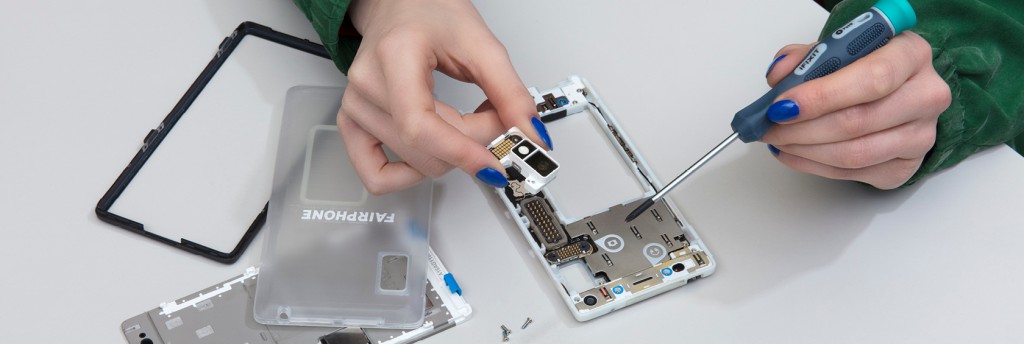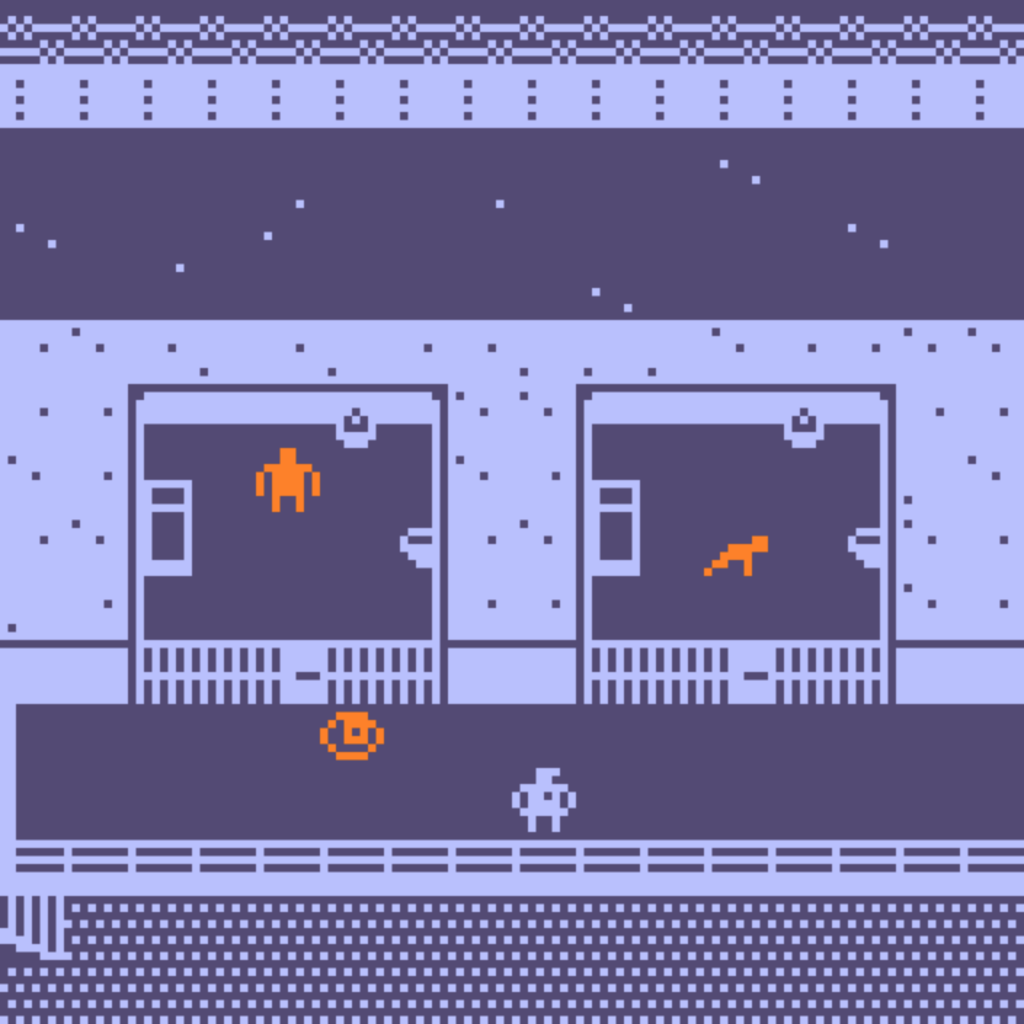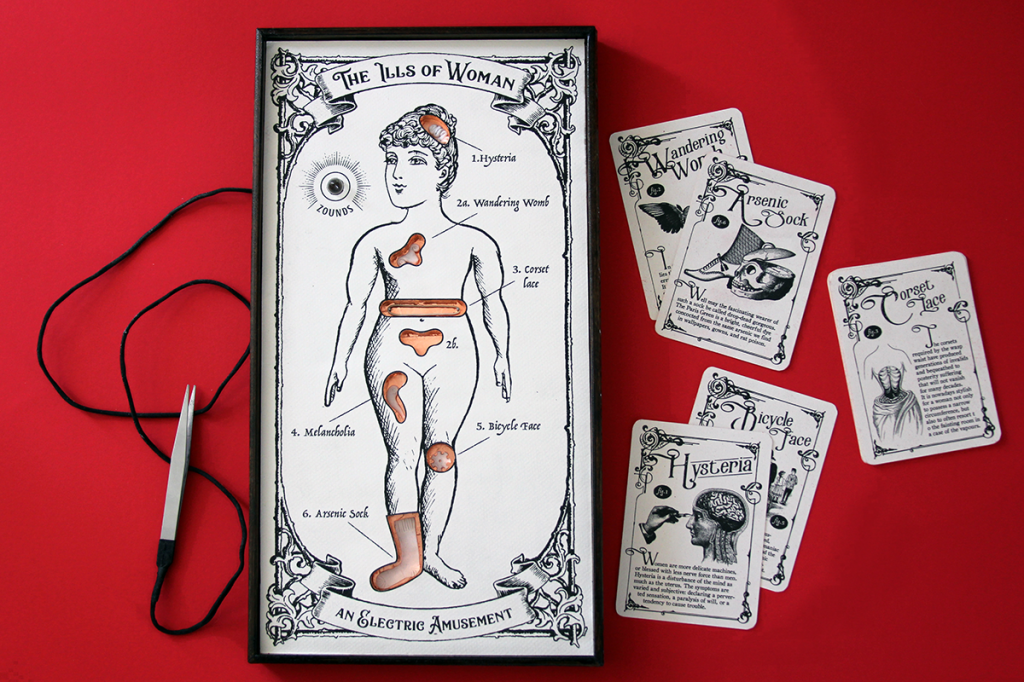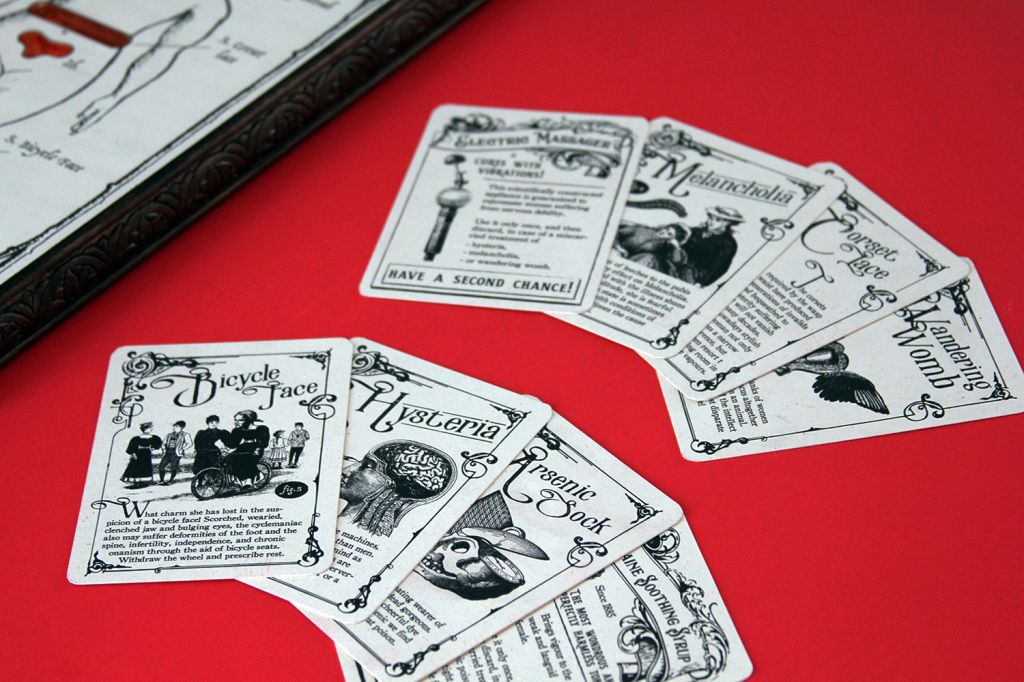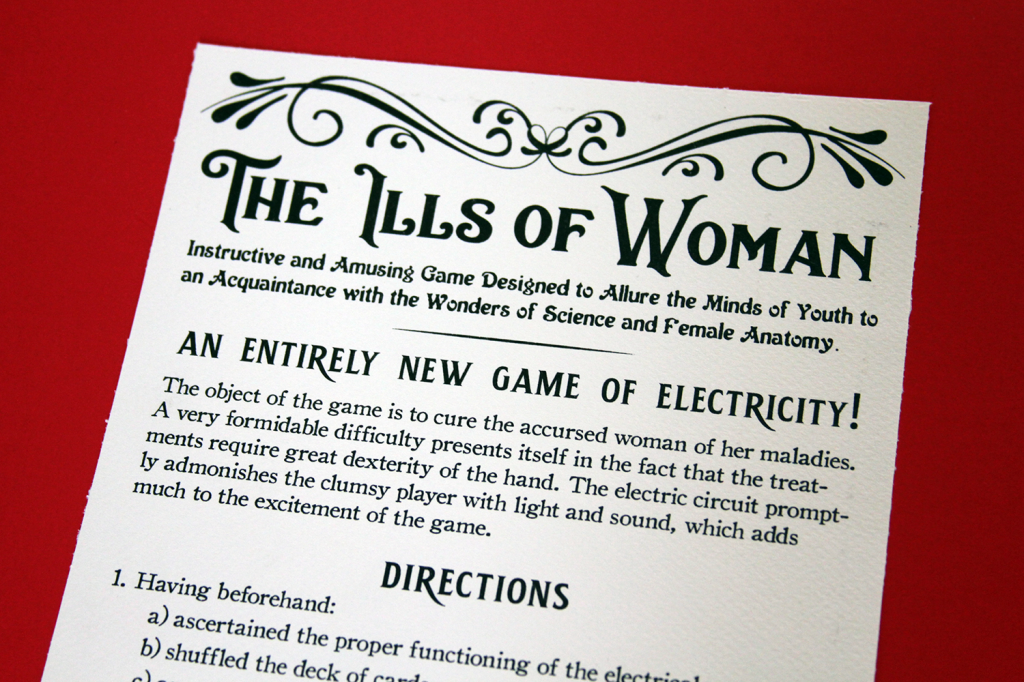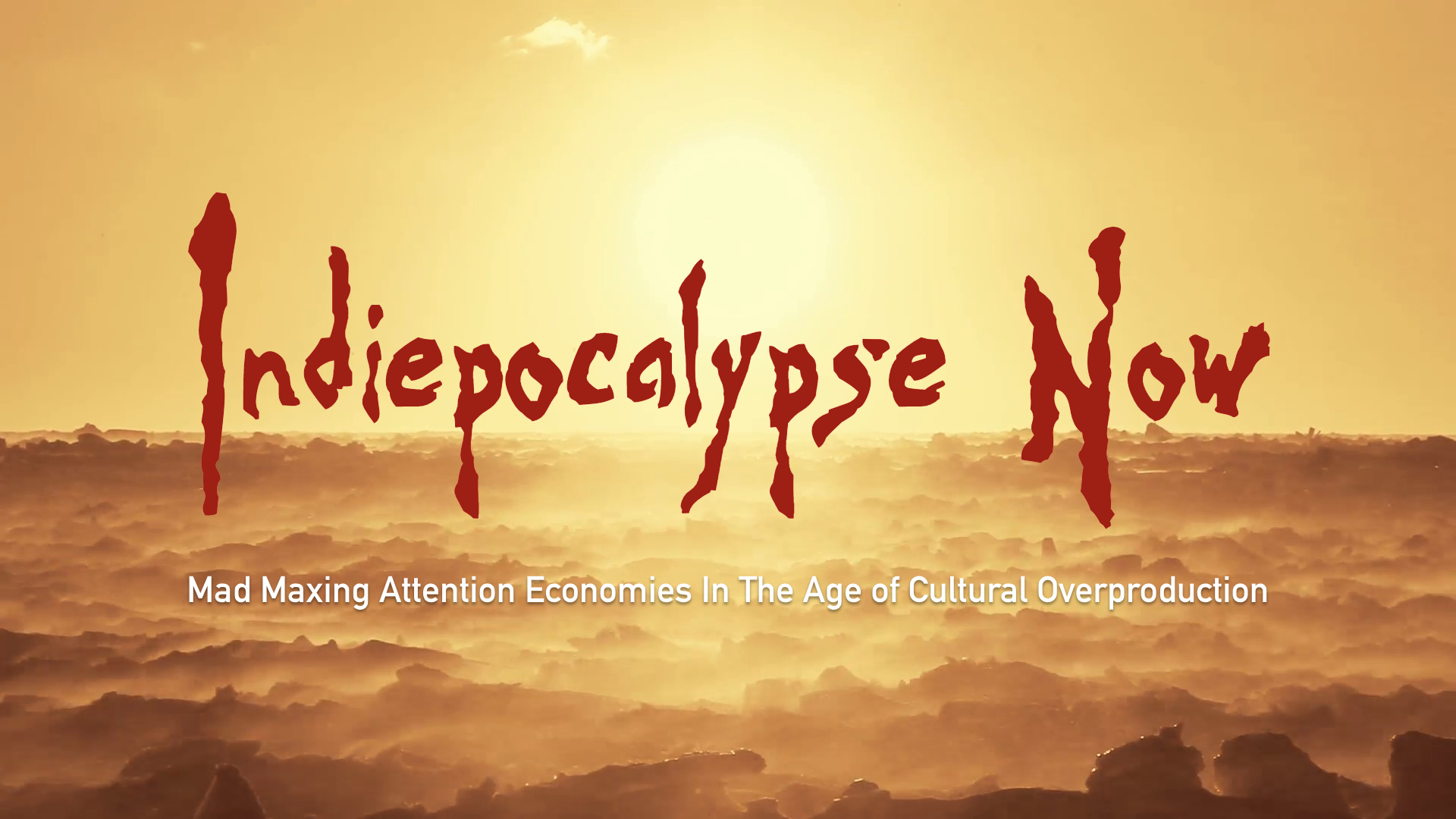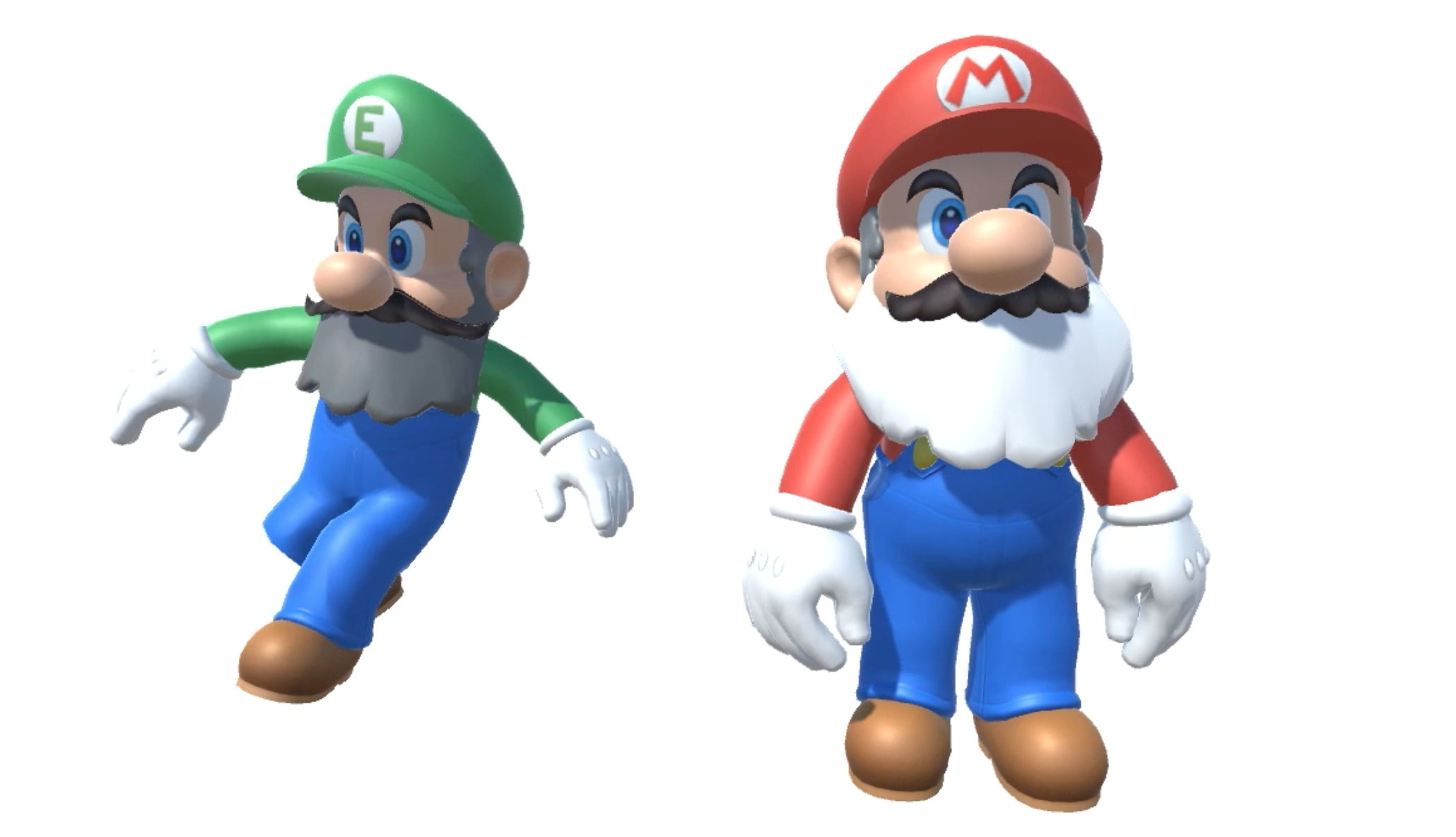A LIKELIKE show featuring videogames beyond video.
Guilty Smells
“The Government has taken a major step in opposing foreign influence in our way of life. Starting today, the possession of UnAmerican food is illegal. You are a sniffing dog for the Department for the Enforcement of the American Diet. Approach the suspects, sniff them, and bark if you detect foreign food smell. We’ll take care of the rest.”
One of the best things about running LIKELIKE is that it provides plenty of excuses and deadlines to make small, experimental side projects that go beyond the digital form.
Guilty Smells was made for Analog Pleasures, an ambitious show of games employing unusual hardware. It’s a collaboration with my CMU colleague and LIKELIKE conspirator Heather Kelley, who has been producing smell-based and multi-sensorial experiences for several years.
Guilty Smells (re)uses a custom made, 8 channel scent diffuser created by a team of Concordia University students for a different project.
The software was put together in a mere week thanks to Fernando Ramallo’s animation tool Doodlestudio 95, which allows to draw and animate sprites directly in Unity, simplifying the workflow in a major way.
Three Sided Football Arcade
August 2020 update: Three Sided Football Arcade is now available on itch.io for free
Wonderville is a new bar, arcade, and event space in Brooklyn. Nostalgia-driven arcade bars are making a comeback all around the States but what makes Wonderville special is its selection of contemporary indie games and handcrafted cabinets. As a director of LIKELIKE, I was asked to contribute to their (successful) Kickstarter campaign, which included a game bundle among the rewards. I thought it was a good excuse to make a little arcade game that has been sitting in my todo list for years.
Three Sided Football Arcade is the first videogame adaptation of the namesake sport. It’s a local competitive game for three human players – the AIs control the two teammates but there’s no one or two player mode. The team that concedes the least goals wins, the goal scored are accounted only in case of a tie.

The original soccer variant was conceived by Danish Situationist Asger Jorn in 1964. 3SF was meant to explain his concept of Triolectics, a detournement of the Hegelo-Marxist dialectics. Jorn’s Triolectical Materialism was presented in a pamphlet titled “De la méthode triolectique dans ses applications en situlogie générale” and published by the Scandinavian Institute of Comparative Vandalism. The booklet has never been translated in English, and the few pages available on the internet are perplexing to say the least.

And yet, the idea of an anarchist football played by three opposing teams in an elegant hexagonal pitch survived the oblivion and was occasionally put into practice by artists and neo-situationists in the ’90s. Today there are a few clubs and tournaments dedicated to 3SF, and even FIFA took notice.
Regardless of what Jorn originally intended to argue, I can see the value of an abstract model of interpretation based on a ternary system. Way too often complex issues are reduced to a binary opposition: us vs them, ingroup vs outgroup, Democrats vs Republicans, Capitalism vs Communism (at least during the Cold War). Sports continuously dramatize binary conflicts and often provide language and metaphors that are applied to other fields. Claiming that all conflicts involve three adversaries is obviously preposterous, but it’s only with the introduction of a third player that phenomena like tactical alliances and betrayals can occur. It’s the minimum conceptual model you have to use in order to make sense of Putin’s complex relationship with the Trump administration, or of the DNC’s moves against Bernie Sanders.
Triolectique / Triolectics from Pied La Biche on Vimeo.
Three Sided Football Arcade might be a bit too fast and frantic to generate the complex social dynamics of a board game like Risk, but it’s still fun to see how the most popular sport in the world is transformed by the addition of fluid alliances, opportunism, and the occasional kingmaking.
Three Sided Football Arcade is a Wonderville bundle exclusive for the time being, but it will be presented at LIKELIKE in August and perhaps at a couple of game festivals and events.
Phone Story 2019 Donation Update
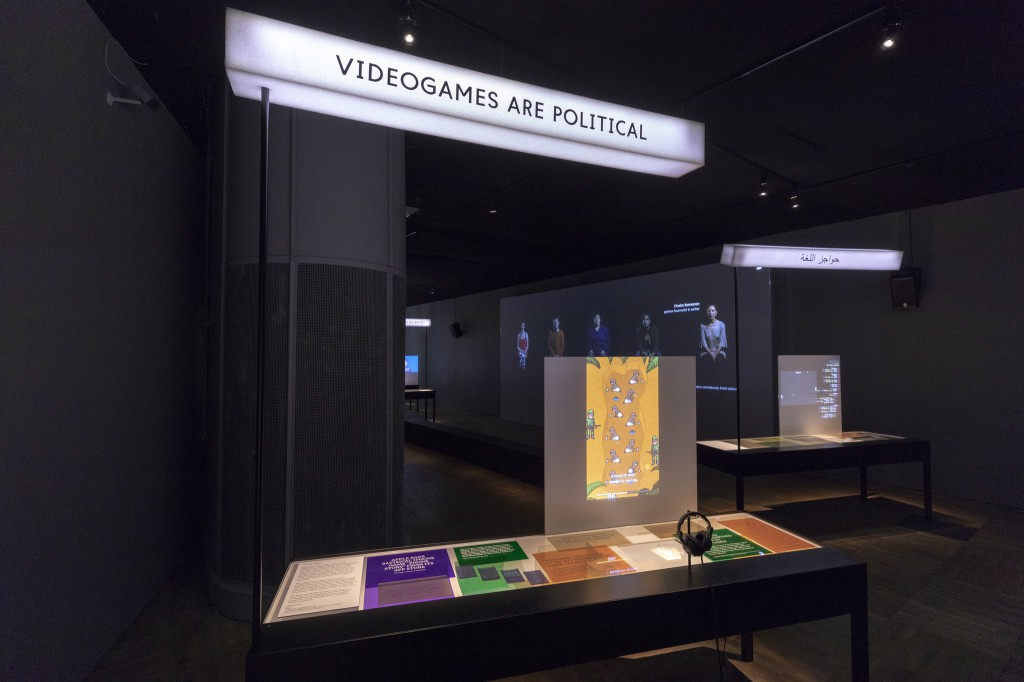
Phone Story, our short game about the dark side of electronics manufacturing, came out 8 years ago. It was immediately banned from the App Store but it has been exhibited in countless of venues around the world, including at a landmark exhibition at the Victoria & Albert Museum in London last year.
The exhibitions don’t generate any revenues for Molleindustria, but the $1 app is still available* on Google Play and makes a tiny amount of money every month.
We pledged to donate all the project’s proceedings to organizations working to address the various problems outlined in the game. The first donation went directly to one of the affected Foxconn workers, the second installment went to China Labor Watch and the Electronics Take Back Coalition.
Since then, the app made a net total of $2,552 which we are splitting evenly between two other great organizations:
The Repair Association advocates for the consumer’s right to unlock, repair, and resell the technological products they purchased. This is a crucial aspect of the fight against planned obsolescence and electronic consumerism.
China Labour Bulletin supports the emergent workers’ movement in China. While not specifically focused on electronics, it seeks to introduce workplace democracy and collective bargaining across industries.
Online transactions don’t generate official looking receipt and this endeavor doesn’t move enough money to be officially chartered as some kind of no profit but you can download all the payments and donation reports here.
If you live in Europe, next time you have to replace a smartphone, consider the Fairphone. As far as ethical consumption under capitalism goes, it’s a remarkable example of transparency and responsible sourcing across the supply chain.
*new Android phones might have troubles running it due to an Adobe AIR update.
Lichenia Release Notes
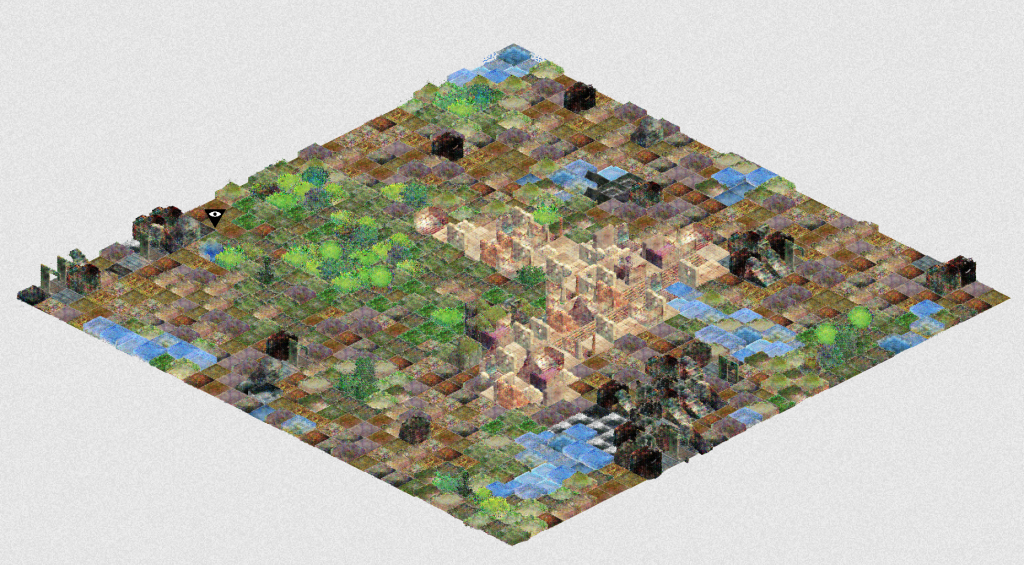
I published a new game earlier this week. It’s called Lichenia and it’s about creating human habitats amidst climate chaos. It involves reshaping the natural and built environment, reclaiming dead cities, and growing sustainable ones. It’s a sandbox game with some tiny secrets to unlock, and a few obscure mechanics to discover. The simulation is infused with dynamic story bits that may help you figure out what’s going on in the little glitchy world. It’s an utopia/dystopia inspired by Octavia Butler’s Parables, and by the notion of Anthropocene.
Lichenia is part of an ongoing series of alternative city building games – the other one so far is Nova Alea. I’ve been presenting this Playable Cities project as a series of magical realist alternatives to SimCity (or better magical Marxist, think Italo Calvino meets David Harvey). SimCity is not only the game that established the genre, but also a recurrent object lesson in topics such as ideology and electronic entertainment, neoliberal urbanism, reductionism in simulations, the ambiguity of interactive text, and so on, and so on.
I spoke at length about the many issues of city games in general, but I keep coming back to the subject precisely because what’s wrong in SimCity – its harrowing omissions, its irresponsible design choices, its unapologetic capitalist realism – is an endless source of inspiration. I could easily spend the rest of my life making semi-broken games that attempt to fix the damage made by Maxis/EA.
More specifically, Lichenia tries to complicate the element of tabula rasa, or blank slate. In all kinds of city and civilization building games, including board games and RTSs, you typically start from scratch, settling on an immaculate wilderness that’s just there for grabs. Such situations are very rare in history. Cities are usually built on top of existing settlements, both human and non-human, which the colonists simply don’t see or value. So in Lichenia you start from a polluted and messy map that you have to remediate. And you can easily add to the mess if the human growth (beige bar) outpaces the natural resources (green bar)
Occasionally you’ll be hit by floods, droughts, and wildfires, an homage to the disasters of the original SimCity. Apparently they were added because the publishers were skeptical of a pure sand box game and requested some kind of challenge. Today disaster preparedness is a crucial component of city planning and should feature more prominently in city games.
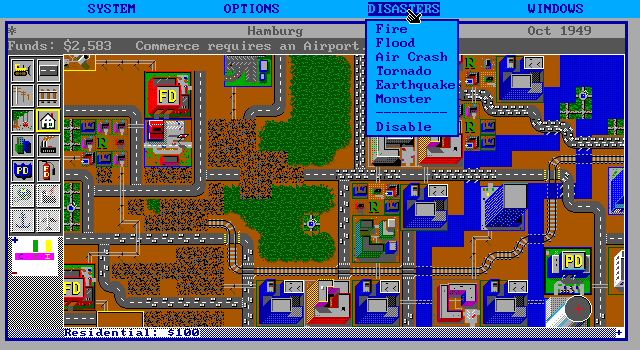
Another starting point for Lichenia was an old quote by SimCity’s original designer Will Wright. He claimed that “the actual process of playing SimCity is really closer to gardening” than to planning or governing a city. It’s about unpacking an ecology by trial and error, understanding a living system.
I’m a big fan of games that intentionally under-explain themselves. Much of the pleasure of playing Starseed Pilgrim, Cultist Simulator, or the Purpose of Water for example, comes from figuring out the rules that govern their systems.
Of course, this is a tremendously risky design philosophy: many players can feel frustrated by the lack of feedback, or feel dumb, or prematurely conclude that there is nothing more to see, and just quit. But I believe it’s a pattern worth experimenting with. It pushes against all the mainstream trends of usability, and requires/creates/prefigures a more critical kind of play.
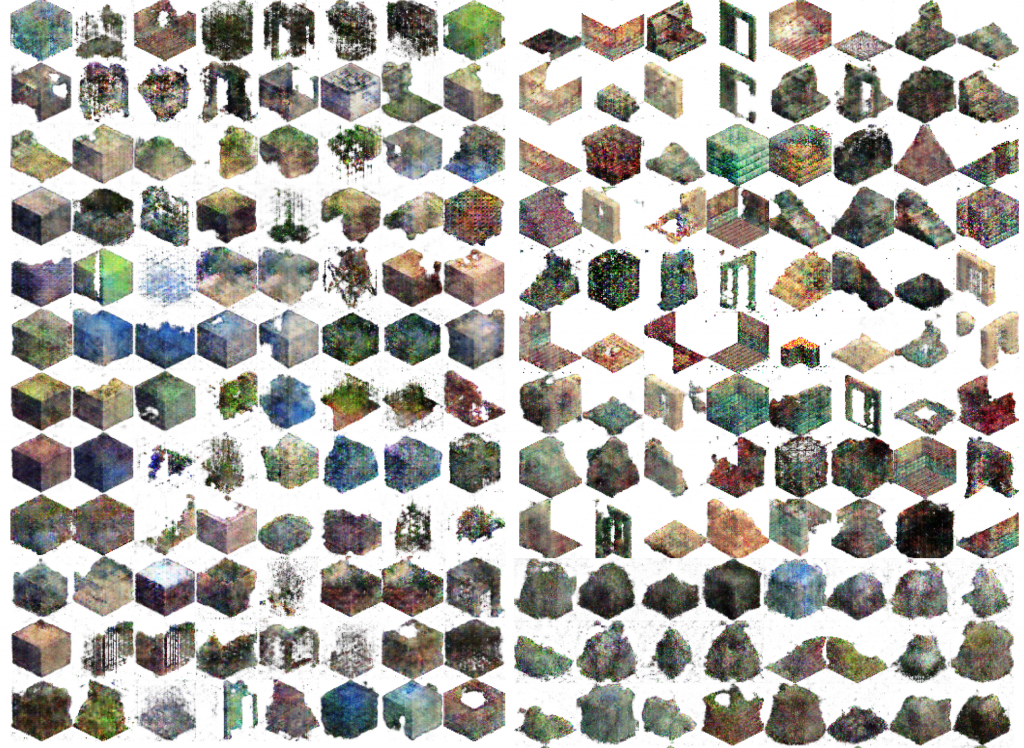
Lichenia’s first prototype was made a couple of years ago, but I abandoned it because I couldn’t figure out an appropriate look and feel. I wanted the player to observe the dynamics and not interpret the visuals in the most immediate and normative way (e.g. a building that looks like a police station stops crimes, a certain type of brick building means low income residential, etc ).
Then, earlier this year my colleague and hero Everest Pipkin released Mushy, a set of tiles generated by a neural network trained on isometric pixel art. These noisy, ambiguous graphics seemed like a perfect match since the game is all about transcending the natural/artificial binary, and squinting hard while trying to recognize patterns.
Lichenia is built with p5.js, a open source library (and a wonderful community) for creative coding. It also uses p5.play, an add-on for making games that I initiated years ago and that’s currently being maintained by some amazing people.
You can play Lichenia on your browser here.
Molleindustria’s Highlights from 2018
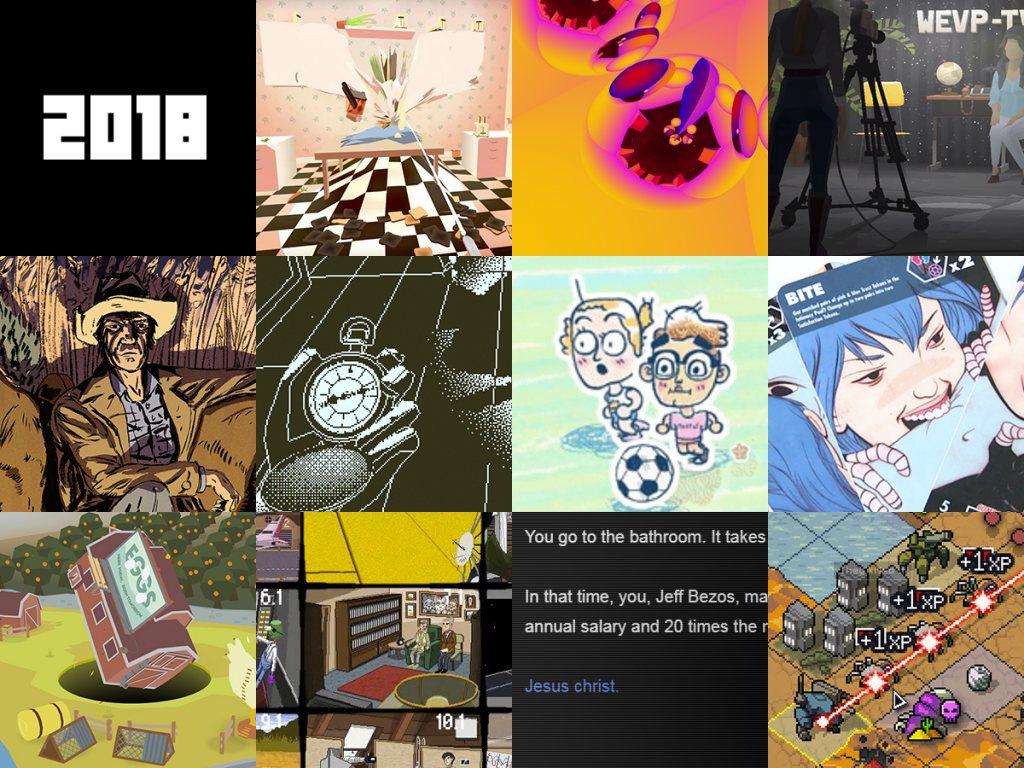
This year I played more indie games than usual in the process of curating shows for LIKELIKE. And yet, I had some trouble finding my usual top picks in terms of novelty, artistic intent, and social engagement. These indiepocalyptic times are giving us an embarrassment of releases but the most popular development strategy seems to be: work within established genres, put a lot of effort into visual polish (probably a result of increasing visual social media), and often just… make games punishingly hard (which I guess yields more play hours in face of limited resources?). At this point I served my time jumping on platforms and getting my ass kicked over and over, so I apologize for some notable absences. These highlights definitely fall on the relaxed side.
Continue reading “Molleindustria’s Highlights from 2018”
THE MEANING OF COLORS
The Meaning of Colors is a tiny “game” about connecting the dots and thinking like a right-wing nut. It was made with flickgame, a tool by Stephen “increpare” Lavelle for the creation of quick, MS painterly, visual hypertexts. The peculiarity (and brilliance) of flickgame is that it forces you to define specific colors as active areas, as opposed to objects or shapes, so I decided to make a piece around it.
A Prison Strike
A tiny game poem about the ongoing prison strike. It’s made with bitsy, an accessible tool for the creation of explorable environment.
Play it on itch.io (5 min/free)
GlitchScarf
GlitchScarf is a playful performance and a system to mess with knitting patterns in real time. Design or glitch a scarf as it’s being made, wear your artful errors with pride.
The project is a collaboration with Tenley Schmida. It was for the most part developed during a 3-day game jam at the Carnegie Mellon University Textiles Lab (the makers of the award winning embroidery game Threadsteading).
This is possibly the only software that allows the creation of knitting patterns on the fly, as opposed to feeding a machine with a static image.
GlitchScarf was made with an AYAB (All Yarns Are Beautiful) board, Processing, and a Brother KH910.
The Ills of Woman
The Ills of Woman is a faux Victorian-era board game imagined as a precursor of Hasbro’s Operation. It was co-designed by Molleindustria and Tenley Schmida who came up with the idea after reading about the “wandering womb”, an ancient belief that the uterus could freely move around the body of a woman causing all sorts of afflictions. Some variations of the wandering womb persisted until modernity, whereas other discredited illnesses referenced in the game have been well within the realm of official medicine until the 20th century.
More than simply making fun of obsolete science we wanted to create a game about how psychiatry, medicine, and even fashion was (and still can be) used to justify the oppression of women and marginalize “sinful” or deviant individuals. There’s plenty of literature on how conditions like hysteria or melancholia were used to pathologize a wide range of behaviors in women.
Victorian board games were permeated by the morality of the time, and often conceived as educational tools, so it’s not a stretch to envision a proto-Operation game along the lines of The Checkered Game of Life, using the then novel electric technology as a gimmick.
The cards’ descriptions heavily draw from British and American writings from the 19th century, making the game somewhat accurate in its wrongness. Still, The Ills of Woman builds upon a caricature of a bigot and oppressive Victorian society. On closer examination, most of the conditions in the game were subject to fierce debates, defying simplistic narratives. While corsets were certainly popular until the 1920s, the practice of tight lacing may have not been as common or extreme as we think, its condemnation may have spun from moral prudishness rather than genuine health concerns; the treatment of Melancholy, which roughly maps to today’s depression, included many common sense practices, and the use of leeches is mostly documented within insane asylums; the notion that the vibrator was invented to cure hysteria may be more of a contemporary fantasy than a historically uncontested fact; even the infamous bicycle face, occasionally resurfacing as a feminist meme, existed only within conservative circles and was quickly replaced by the now common-sense idea of cycling as a healthy and liberatory practice – even for women.
The Ills of Woman is currently a unique (and functional) piece and it will be shown at the next likelike show. If you want to include it in an exhibition or festival, feel free to contact us.
Dogness Release Notes
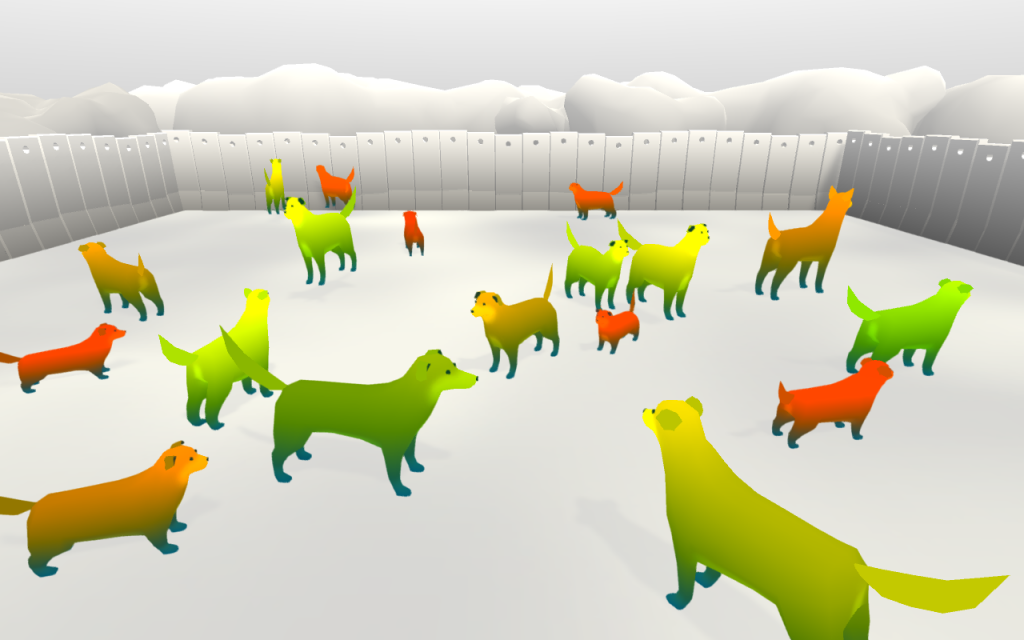
How would we sort things out? Canid, hominid; pet, professor; bitch, woman; animal, human; athlete, handler. One of us has a microchip injected under her neck skin for identification; the other has a photo ID California driver’s license. One of us has a written record of her ancestors for twenty generations; one of us does not know her great grandparents’ names. One of us, product of a vast genetic mixture, is called “purebred.” One of us, equally a product of a vast mixture, is called “white.” Each of these names designates a different racial discourse, and we both inherit their consequences in our flesh.
– Donna J. Haraway, When Species Meet
Yesterday I released Dogness, a game in which you to have to create a the most “perfect” and homogeneous dog park. The perfect dog is randomized every time, and it is quite challenging to create a population that approximates the ideal. It involves controlling immigration, expelling the “unfit” dogs, and selectively breeding the animals to preserve or achieve the desired traits. The traits are determined by four “genes” (size, build, height, and color). The offspring tends to look like the average of the parents with some added randomness. The genetic engine is extremely simplified for playability: there are no dominant or recessive genes and the sex of the parents doesn’t matter, anybody can mate with anybody. However, puppies can come out stunted if they are forced to mate with close relatives. At the end of each 6 minutes section you are evaluated based on the moving average of your population’s Dogness. A Dogness of 70% or higher is a good score.
Dogness was meant to be a submission for #resistJam, a friendly competition calling for games that “resist oppressive authoritarianism”. The game itself was pretty much done a year ago but it took a looong time to find the willpower to complete the UI.
The game is obviously a direct response to the resurgence and normalization of white supremacy in the Trump era, but I was going for something a bit more complex and open-ended than a satirical allegory.

I’ve been looking at the relationship between eugenics and dog breeding, and how they support and undermine each other. Humans have been breeding dogs since forever for utilitarian purposes (in fact we likely adopted and domesticated each other), but the crystallization of breeds and the obsession with pedigree only happened at the end of the 19th century with the creation of Kennel Clubs. That’s around the same time eugenics was introduced by Francis Galton, Charles Darwin’s problematic cousin.
Galton’s starting point for eugenics was the domestication of animals and he often referred to dog breeding to support his theories. The dude spent an awful lot of time trying to find biological justifications for social inequality, and therefore was well loved by rich people and British aristocrats.
Eugenics and dog breeding shared the same language and misconceptions and provided a pseudo-scientific backing to racist ideologies: the idea of blood purity, mongrelization as dilution of desirable traits, biological reductionism, and so on. Consider how during the golden age of eugenics in the United States there were societies promoting “fittest family” contests similar to dog shows.

Recently there has been more awareness of the problematic aspect of purebred dogs. Breed standards are creating increasingly unhealthy animals, and calls for the ban of “puppy mills” are becoming more frequent. However, at the same time, we are seeing a resurgence of xenophobic groups recuperating these discredited theories (of course proper neofascists would pedantically argue about all their different flavors of shit: how white supremacy is not white nationalism, how some of them may not deny holocaust and what not, but it’s really not worth getting into details).
Anyway, the game is available on itch.io as Pay What You Want and it will officially premiere at the next LIKELIKE show along with a bunch of amazing dog-related games.
LIKELIKE
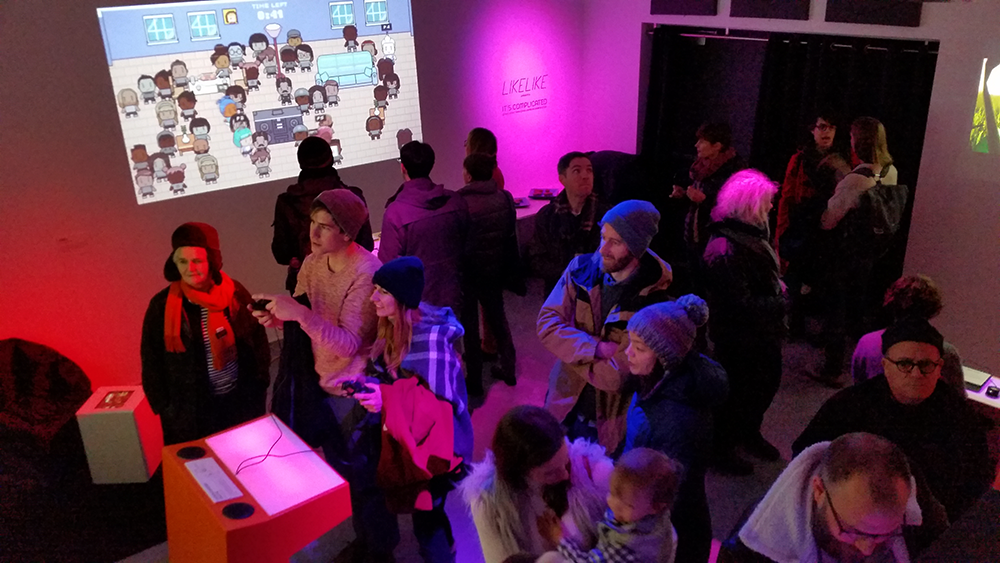
At the beginning of 2018 I quietly started a new project in Pittsburgh. LIKELIKE is a space for independent games and playful arts. Its mission is to expand the audience and perception of videogames, promoting indie culture, giving visibility to experimental and overlooked gamemakers, experimenting with novel ways to present games beyond the white cube and the expo formats, creating a nexus for the local indie and digital art scene.
LIKE is built upon about 15 of experience in showing my games in the most disparate contexts and the work of similar venues, festivals, and collectives from Babycastles onward.

For the first phase of the project the goal is to organize a series of themed shows, exhibiting 4 to 6 projects selected for their accessibility to non-gamers and their diversity of approaches. The first event was about “complicated relationships” and showcased multiplayer games such as Lovers in a Dangerous Spacetime, Fingle and Breakup Squad as well as the upcoming card game Consentacle. February’s show was centered around alternative shooters, which was unexpectedly timely given the current debate about gun control, and Trump’s use of videogames as scapegoats.
For the future the plan is to form a proper collective and add more site-specific, performative and experiential pieces to the mix. Let us know if you have playful or gamelike projects that struggle to find a home.
Top 2017 Games That Waste Your Time Properly
I’ve been interested in the attention economy of videogames lately and in the wicked problem of the duration of play experiences. While AAA companies gamblify their business models and compete for the most repulsive and exploitative monetization schemes, indies generally stick to wholesome premium experiences (in Apple newspeak, the pay once and play forever genre). But premiumness is hard to sell to the vocal gamers proletarized by an endless economic crisis. There’s plenty of pressure on indie gamemakers to offer the hours of playtime that can justify a $5 to $20 price tag – the kind of market positioning that can potentially pay the bills. Play hours can be generated expensively with content, or for cheap with truckloads of text, sheer difficulty, or repetition. This best-of-the-year list is devoted to the idealists who organize the players’ time according to their expressive goals, and not to the perceived market demand. If games are machines for wasting time, they may as well waste it in an artful way. Hand picked with my usual emphasis on things that matter and imperfectly ordered from longest to shortest:
Continue reading “Top 2017 Games That Waste Your Time Properly”
John O’Neill, Artgame Author
I made a short documentary/Let’s Play about one of the first artgame makers: John O’Neill who, in the early ’80s, created strange videogames about the meaning of life and dolphin communication. It contains material that has never been recorded or put together before.
I was doing some research for one of my classes when I stumbled upon O’Neill’s wikipedia page. It was well documented, and his tabletop game company is active, but I could find very little information about his early digital games, except for a couple of screenshots and two incomplete videos. So I went down a retrogaming rabbit hole and I even ended up interviewing him.
The great game industry crash of 1983 pretty much wiped out all the opportunities for game experimentation in North America, and several of John’s personal projects were cancelled or obtained limited release; but it’s remarkable how despite everything, both Lifespan and The Dolphin’s Rune are still playable today via emulators.
The games are quite cryptic but if you feel like trying them, in this zip you’ll find everything you need to emulate them on Windows, plus a scan of The Dolphin’s Rune manual:
Lifespan-The-Dolphin-Rune.zip
In this zip you can find the interviews quoted in the video and a very detailed account of John O’Neill’s involvement with the video game industry. It was written by the man himself a few years ago in response to an inquiry from a game historian:
John-Oneill-bonus.zip
Indiepocalypse Now. Indiecade Europe 2017 Keynote
This is the transcript+slides of a keynote I gave at the 2017 Indiecade Europe festival in Paris. Attention economy, indie market saturation, and how, why, and for whom we make games. Read it here:
http://molleindustria.org/indiepocalypse/index.html
A Short History of the Gaze – Release Notes
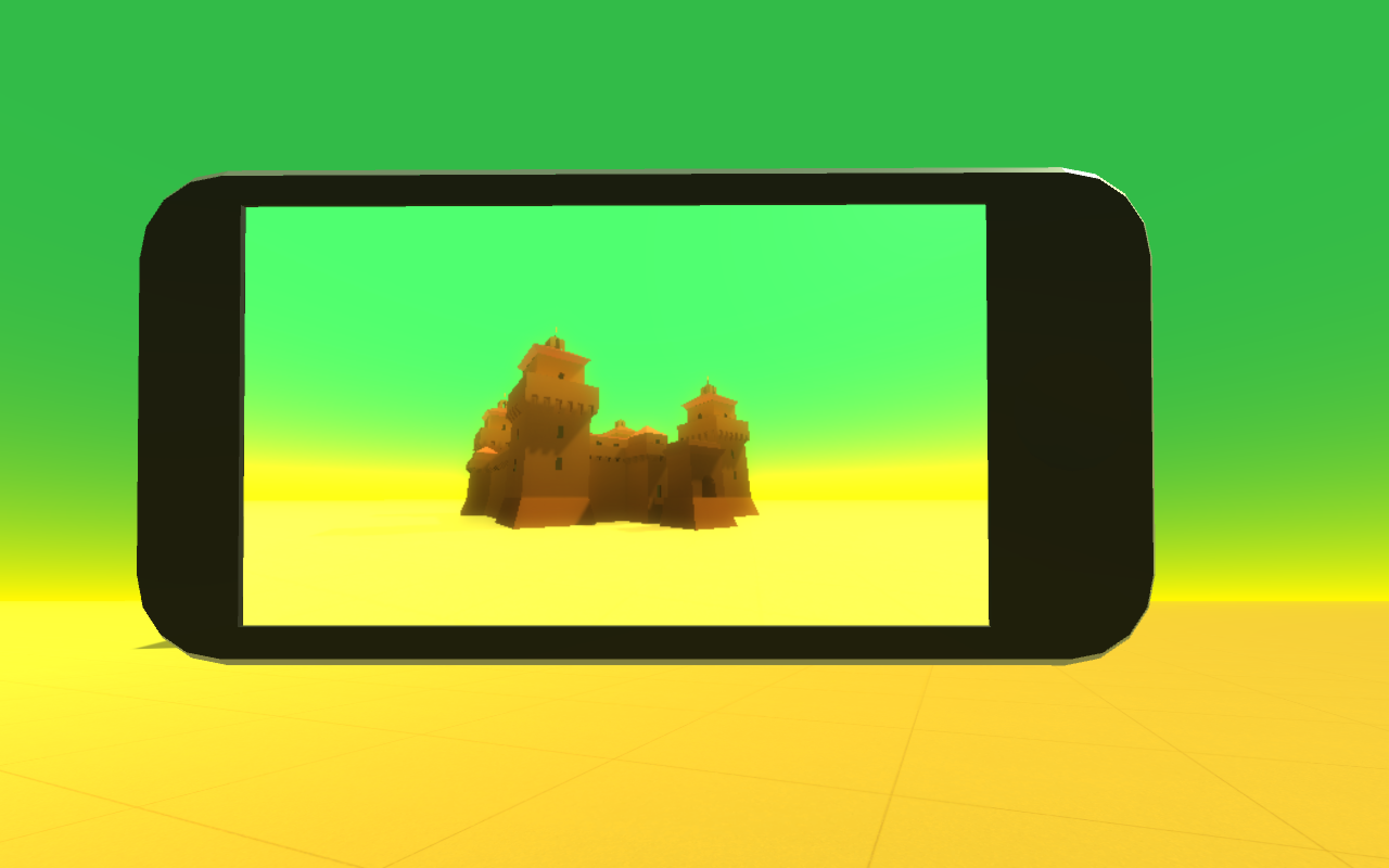
A Short History of the Gaze is finally available for free to the few privileged people with access to Oculus Rift and the required high end computing equipment. The piece premiered at the conference WEIRD REALITY: Head-Mounted Art && Code in October 2016 and has been shown at a couple of festivals since then.
It’s the first molleindustria project that employs a first person view and immersive 3D environments, mainly because they are the subject of the piece. A Short History of the Gaze is conceived as an experiential essay, in analogy to the film essay genre; instead of exploring a theme though text and images, it tries to do so though a series of scenarios and micro interactions, mostly looking and not looking at things.
All the scenes examine the act of looking and its relationship with violence. From the evolution of sight in a pre-cambrian sea creature to the dominance display of a primate, from a landscape of billboards begging for attention to an infinite panopticon.
The gaze is central to any Virtual Reality experience and yet rarely problematized. I wanted to create an artifact that is immersive while fighting against the suspension of disbelief, in which the player/viewer is encouraged to fill the conceptual gaps between dramatically different scenario. A Short History of the Gaze is my response to the many oversimplifications that afflict the discourse surrounding virtual reality: VR as presence and embodiment, VR as empathy amplifier, VR as the liberation from a despotic directorial gaze etc.
If you tried it and you want to know more, you can watch this (spoilery) 5min playthrough with commentary.
Stranger Playthings: Remaking a VR counterculture
The second coming of Virtual Reality is a convergence of different technological traditions with different aesthetics, goals, and strategies. In this talk given at the A MAZE and Game Happens festivals in 2017 I tried to question the current narratives supporting the idea of VR as a mass-consumer product, and recuperate some of the visionary and countercultural ideas that went out of fashion since the early ’90s.
The right to screenshot
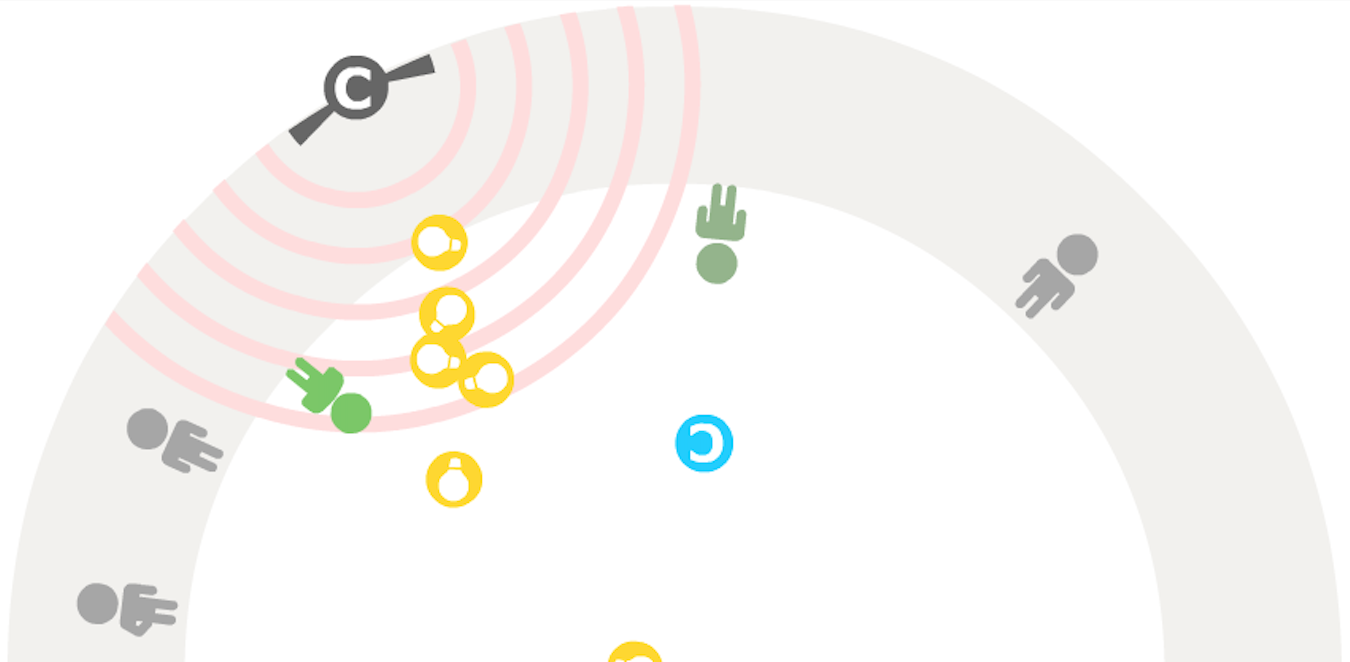
Sometimes I get asked for permission to publish screenshots from my games. It annoys me a bit because all my games are released under Creative Commons and, besides, I don’t see screenshots or video recordings ever falling outside of fair use. Streamers, youtubers, and machinima artists can even make a living out of commenting and manipulating recordings gameplay. The documentation of a dynamic, interactive piece is always transformative, participatory, and many steps removed from the actual work. Architects don’t prohibit taking pictures of their buildings.
Despite that, the publishing industry and academia are quite attached to pre-internet conventions, and fair use is not always valid outside of the United States. Therefore I, Paolo Pedercini, representing the project known as molleindustria, hereby state that:
All screenshots and video recordings of molleindustria games and products are to be considered public domain and can be reproduced without permission or attribution for any commercial and non commercial use.
You can download relatively high resolution screenshots of most games on this website from here.
SimCities & SimCrises
I had the honor to be one of the keynote speakers for the first International City Gaming Conference in Rotterdam last month. The conference, mainly attended by city planners and architects, looked at how games can facilitate more effective and inclusive city-making. Here’s the transcript of my talk (a similar version was presented a year ago at the Screenshake festival in Antwerp): http://molleindustria.org/GamesForCities/
Gaming under socialism
In a recent episode of the politics/comedy podcast Chapo Trap House, a listener asked “What can socialism do for gamers’ rights?”. The question was obviously a joke, but the hosts produced a humorous and somewhat thoughtful answer.
Thankfully, there is no such a thing as “gamers’ rights” in the sense of something distinct from consumer rights. The joke was likely a reference to the sense of entitlement and tribal identification that fueled the gamergate campaign. But the question of what gaming would look like in a socialist world has haunted me for days. Not only because I’m a leftist and I care about games, but because of how it relates to many crucial issues of 21st century radicalism…


